
Your cart is empty!
Showing all 5 results
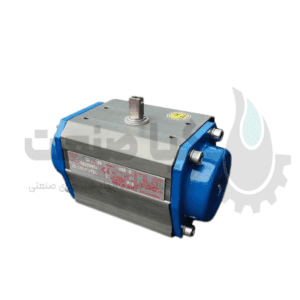 برای سفارش و اطلاع از قیمت با ما تماس بگیرید
برای سفارش و اطلاع از قیمت با ما تماس بگیرید
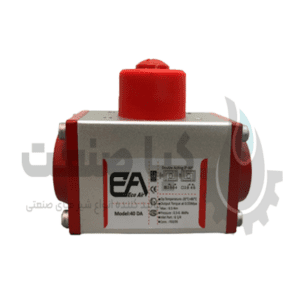 برای سفارش و اطلاع از قیمت با ما تماس بگیرید
برای سفارش و اطلاع از قیمت با ما تماس بگیرید
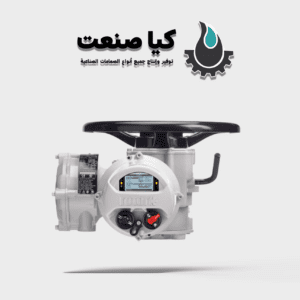 برای سفارش و اطلاع از قیمت با ما تماس بگیرید
برای سفارش و اطلاع از قیمت با ما تماس بگیرید
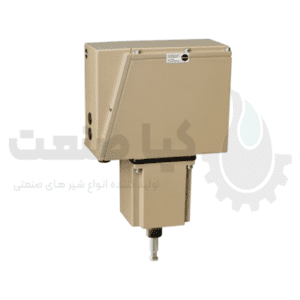 برای سفارش و اطلاع از قیمت با ما تماس بگیرید
برای سفارش و اطلاع از قیمت با ما تماس بگیرید
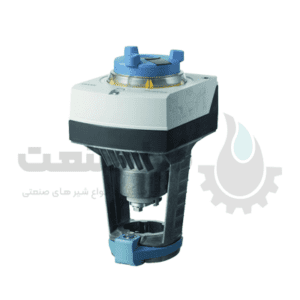 برای سفارش و اطلاع از قیمت با ما تماس بگیرید
برای سفارش و اطلاع از قیمت با ما تماس بگیرید
An actuator is a device that receives energy input and converts it into movement or force and is an essential component in many modern technologies and engineering fields.
From robotics to renewable energies, actuators play an important role in controlling and automating various processes and systems.
They come in many different shapes and types, each with unique capabilities, for example using a handwheel, a simple pneumatic cylinder, or a complex electric motor.
Actuators have different forms and each type has a specific purpose depending on the application. The two main categories of stimuli are as follows:
Type of movement
Power supply
Actuators can be classified according to their type of movement, linear or rotary. Linear actuators create linear motion in a straight line, while rotary actuators create rotary motion in a circular path.
Linear actuators move objects along a straight line and use a belt and pulley, rack and pinion, or ball screw to convert the rotation of an electric motor into linear motion.
Linear actuators stop at a fixed linear distance and are known for their high positioning accuracy and repeatability, easy installation and operation, low maintenance, and ability to withstand harsh environments.
These actuators are commonly used in food processing, automotive, material handling, and more for tasks such as pushing, pulling, lifting, and positioning.
Rotary actuators convert energy into rotary motion through a shaft to control the speed, position, and rotation of equipment.
These actuators have a continuous rotation motor and are versatile in use.
An electric motor is a rotary actuator powered by an electrical signal.
High torque, constant torque during full angle rotation, compatibility with different diameters, zero backlash hollow shafts, double output, low maintenance and can achieve any degree of rotation.
Rotary actuators are used in medical equipment, radar and monitoring systems, robotics, flight simulators, semiconductor industries, special machine manufacturing, and defense.
There are different types of actuators based on the power source, including pneumatic, hydraulic, electric, magnetic, thermal, and mechanical, each of which has unique advantages and disadvantages.
The type of actuator used in an application depends on the specific needs of that application, such as power level, response time, and required durability.
Pneumatic actuators (Figure 1) use compressed air to create motion.
They can be used for various applications such as moving machine parts or controlling valve position.
They are often preferred for applications that require high power, fast response times, or explosive environments.
Hydraulic actuators use fluid pressure to create movement.
They are usually used for heavy duty applications such as construction equipment, manufacturing machinery and industrial robots.
Hydraulic actuators offer high levels of power, durability and reliability.
Electric actuators (Figure 2) use electrical energy to create motion.
They can be driven by AC or DC motors and are often used in applications that require precise control, low noise, and low maintenance.
Electric actuators are commonly used in automation systems, medical equipment and laboratory equipment.
Magnetic and thermal actuators are two types of actuators that use magnetic and temperature changes to create movement, respectively.
Magnetic actuators use magnetic fields to generate power.
Most thermal actuators use the expansion or contraction of materials in response to temperature changes.
Both actuators are commonly used in micro-electromechanical systems (MEMS) and other small applications.
Mechanical actuators use physical mechanisms such as levers, gears, or cams to create motion. Hymechanical actuators are usually used in applications where low cost, simple operation, and durability are important. Examples include manual crank machines, manual valve systems, and mechanical locks.
Actuators are widely used in machines, cars and automation in the modern world. In the following, we explain the common applications, the devices suitable for the mentioned applications and the drivers that supply the devices with electricity:
Automatic control of fluid flow in pipelines and process systems, control valve, linear flowmeter, rotary (hydraulic actuator, electric actuator)
Adjusting industrial valves, positioning device components, ball valve, electric valve, rotary motor servo (hydraulic actuator, electric actuator)
Excavator drilling, grading and excavation in construction and mining operations (hydraulic actuator)
Manufacturing of metal parts, plastic molding and forging operations, hydraulic press, CNC machine, rotary hammer (hydraulic actuator, electric actuator)
Machine tool power, robots and electric motor conveyor systems, robot arm, linear conveyor, rotary (electric actuator, hydraulic actuator)
Adjustment of fuel and air flow in throttle internal combustion engines, rotary fuel injector (mechanical, electric)
Adjusting the speed of steam or gas turbines in power plants, turbine governor, rotary valve (electrical, hydraulic, thermal)
Simple machine control in mechanical systems such as mechanical lever opener, linear electric switch, rotary (mechanical, electric)
Power transmission in machines such as conveyor systems and gear pumps, gearboxes, gear pumps, linear and rotary hydraulic motors (hydraulic actuators, mechanical actuators, electric actuators)
You can also read the article Top 10 manufacturers of pneumatic actuators.
Copied to clipboard